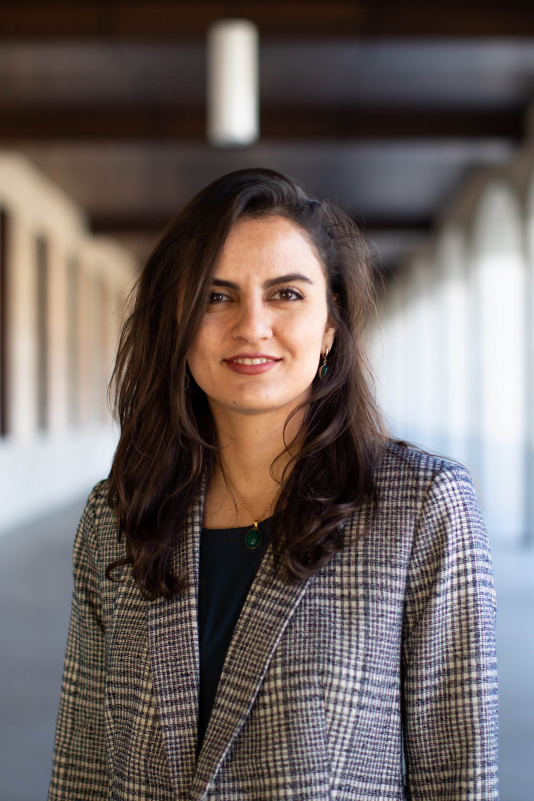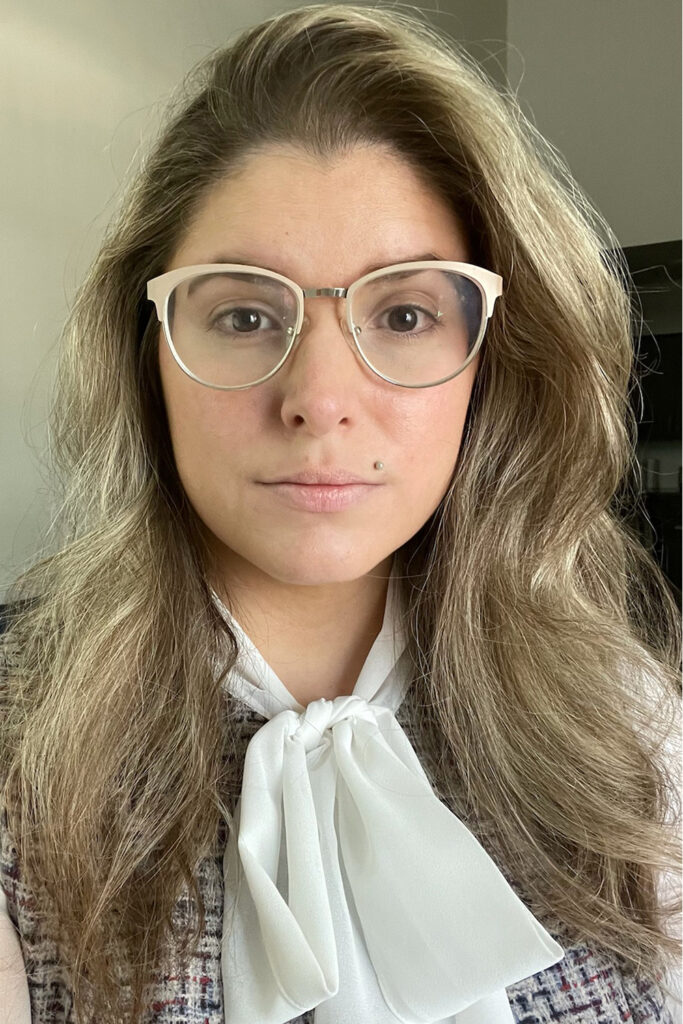Education researchers partner with STEM instructors to make courses more inclusive
The IDEAL Research Lab, led by education Assistant Professor Shima Salehi, helps redesign introductory science and engineering classes to address barriers for historically marginalized students.
Jocelyn Nardo, a first-generation scholar and the daughter of Cuban immigrants, remembers a discouraging moment from her undergraduate days at a Florida university: After taking a class in forensics, Nardo discovered an affinity for science and decided to change her major from English to chemistry. Her advisor gave her two duplicate forms.
“She said, ‘You’ll end up changing back,’ ” recalled Nardo, who not only defied her advisor’s prediction but went on to earn both a master’s degree and a PhD in chemistry.
Now a postdoc at Stanford Graduate School of Education (GSE), Nardo is focused on easing the barriers that might deter other students from pursuing a STEM education. As a researcher with the new IDEAL Research Lab at Stanford, she and other postdocs, students, and faculty work to identify challenges facing historically marginalized university students in STEM, and partner with instructors to apply educational principles to redesign courses in ways that promote access and a sense of belonging.
The lab is directed by GSE Assistant Professor Shima Salehi, who studied electrical engineering as an undergraduate at Sharif University in Iran before earning her master’s and PhD in learning sciences at Stanford. The work of the lab is partly an extension of some of her own research developing evidence-based interventions to support underrepresented college students in STEM.
“We’re taking principles of learning and cognition and bringing them into day-to-day classroom practice, in a more equitable way,” Salehi said. “It’s about creating a stronger bridge between the theory of learning and the practice of teaching. We’re designing activities and tools to provide a more scaffolded learning environment for students.”
The IDEAL Research Lab is a component of the larger IDEAL initiative at Stanford, which emerged from the university’s Long-Range Vision to ensure inclusivity, diversity, equity, and access in learning environments.
“One of our objectives with the IDEAL initiative is to apply research and expertise to the challenges facing students – to study the barriers to equity and then use that evidence to improve our practices,” said Dan Schwartz, the I. James Quillen Dean of the GSE and the Nomellini-Olivier Professor of Educational Technology, who is the founding deputy director of the campuswide IDEAL initiative.
Targeted strategies address students’ needs
Since its launch in 2020, the lab has taken on several projects concerning equity barriers in introductory science and engineering courses at Stanford.
A course on principles in chemistry, for example, which focuses on teaching concepts and problem-solving skills, meets prerequisite requirements for a variety of majors, from earth science to mechanical engineering. Many pre-med students also enroll, well before settling on their major. “This course is one of the most important gateways for students interested in STEM,” Salehi said.
But some, especially first-generation and underrepresented minority students, enter the class at a disadvantage – if they come from a high school that didn’t offer AP or honors courses, for instance, or one that had less experienced teachers.
A two-quarter sequence, Chem 31A and B, was introduced in 2004 as an alternative to the original 10-week course, giving students with less preparation a longer runway to master the material. A placement test for incoming students helps determine who would most benefit from the two-quarter option instead of the original section (Chem 31M).
Students who need more time to get up to speed in this course often face other pressures and demands on their time, compounding the difficulty, said Jennifer Schwartz Poehlmann, a senior lecturer of chemistry at Stanford, who coordinates and co-teaches the first-year chemistry sequence.
“They might have one or more jobs, or they might be struggling in multiple classes, so they need support in those, too,” she said. “The hours just add up for these students.”
Reducing the amount of material covered in the course isn’t a viable option, Poehlmann added. “The problem would then become that [students] won’t be prepared for subsequent courses – it would set them up to fail in a later course where they would lack key skills or knowledge,” she said. “It takes time to learn science. There’s no way to sugarcoat that.”
In the years since, the instructional team for Chem 31A and B has continued to pursue strategies for supporting students, including a robust mentorship program introduced in 2020 that provides personalized mentoring and tutoring, as well as support around belonging and well-being.
The IDEAL Research Lab got involved that year when Natalie Chapman, then a Stanford student majoring in mechanical engineering, undertook a research project through the GSE’s undergraduate honors program in education. With Salehi as an advisor, Chapman interviewed 57 students who had taken the introductory chemistry sequence in recent years, 60 percent of whom identified as first-generation/low-income.
An analysis of the findings by Chapman, Nardo, and other researchers at the IDEAL lab found that students who had less preparation in high school struggled with certain course elements such as lab worksheets, practice problems, and group work.
Drawing on her expertise in both chemistry and education principles, Nardo worked with Poehlmann to address some of the components students found challenging. For starters, she adapted a problem-solving template that Salehi had developed for physics as part of her dissertation research, tailoring it to chemistry; Poehlmann then customized it further to the course itself. The template walks students step by step through the process of unpacking a complicated chemistry problem, including clarifying the task at hand and identifying the relevant skills and concepts needed to solve it.
“Often students get to a problem and they’re like deer in the headlights – they don’t even know where to start,” said Poehlmann. “The problem-solving template helps them to get through it on their own, and then to make connections and use the knowledge they just gained to solve the next problem.” The IDEAL lab also helped develop and implement a once-weekly supplemental problem-solving session, which Poehlmann said instantly generated double the attendance she found with office hours.
Another project the IDEAL lab has taken on involves an introductory sequence in mechanical engineering, also focused on concepts and problem-solving. The team, led by Fred Krynen, a doctoral student at the School of Engineering, designed targeted activities for each of the course’s weekly learning goals, creating opportunities for students to receive timely and specific feedback they could incorporate to improve their performance going forward. The changes to the course debuted this fall, and the researchers will closely monitor their impact.
The lab is also working with the math department on a problem-solving template tailored to an introductory sequence of calculus courses. And an economics instructor recently reached out to Salehi for guidance in making an introductory course more appealing and engaging for a diverse body of students.
“It’s really fulfilling,” Salehi said. “I love having this close collaboration with instructors – hearing their desire to teach better, and helping them to do that.”

